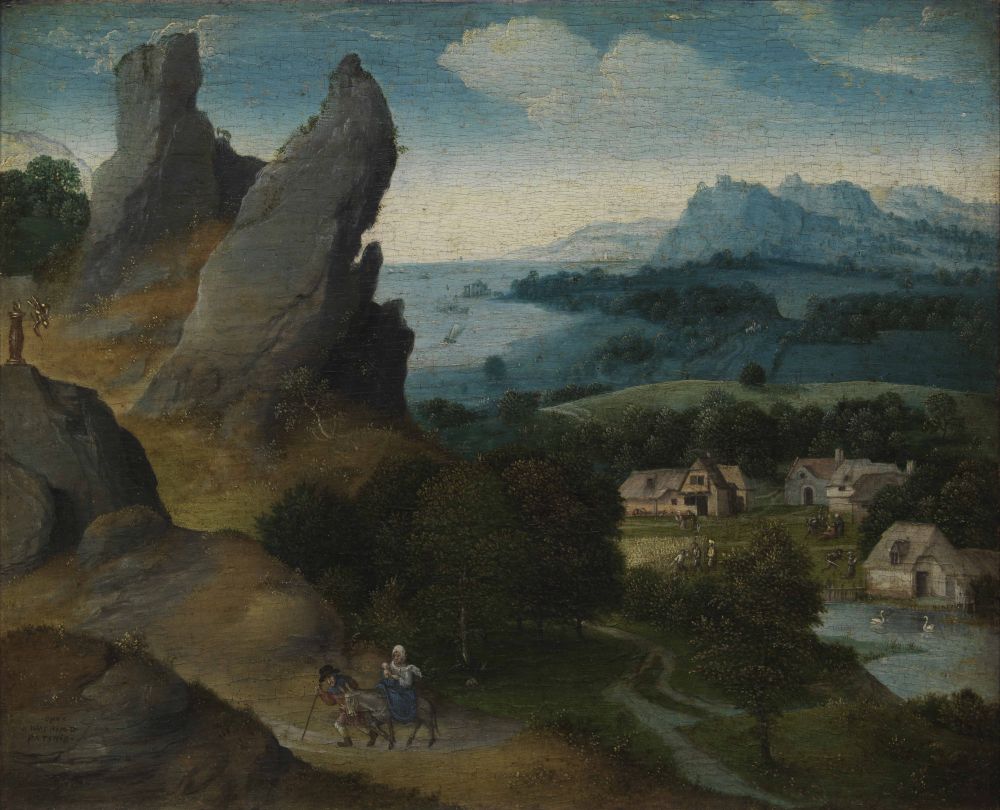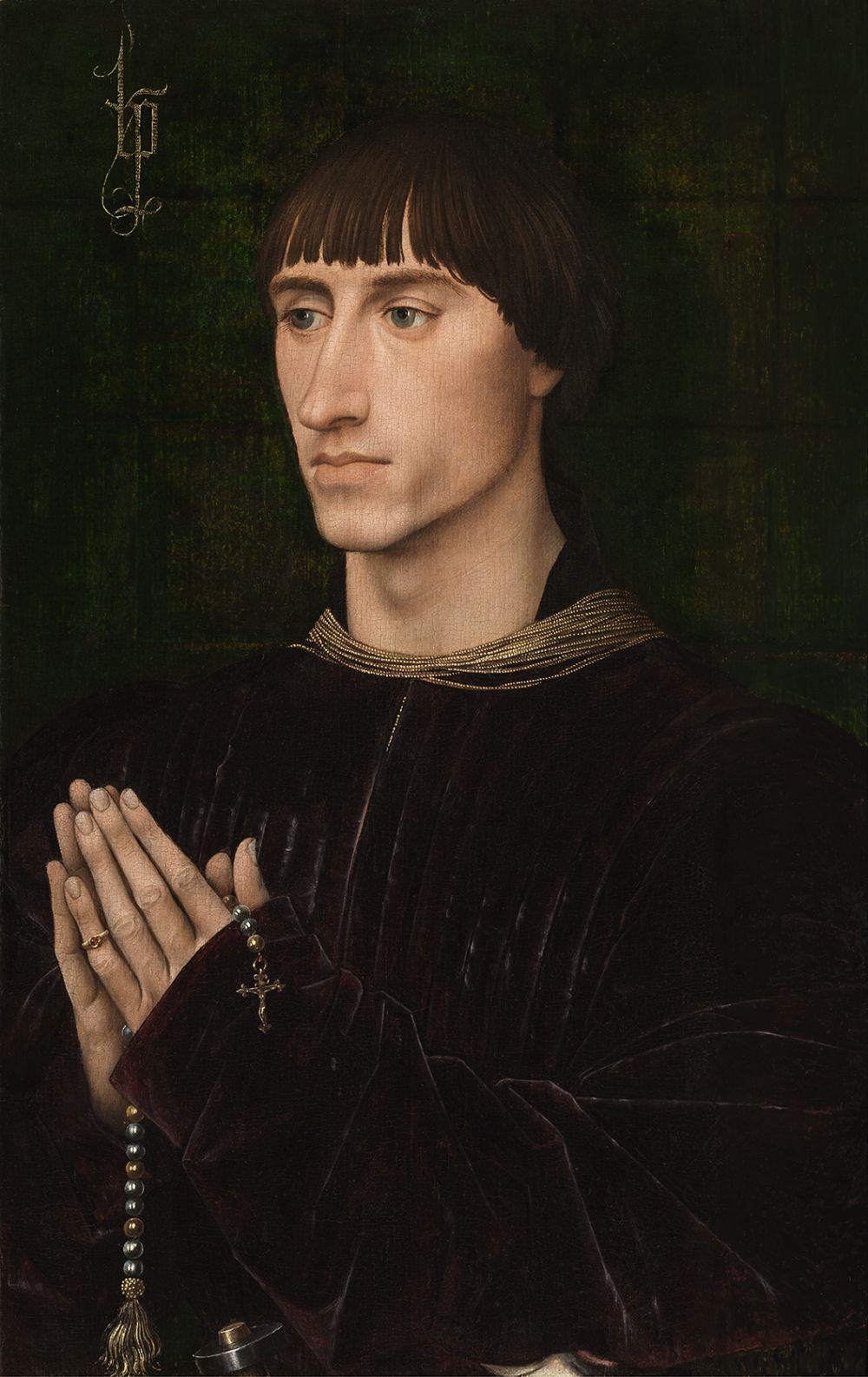Thanks, Florent!

Rubens and the Baroque ruled the roost in 19th-century Antwerp, but this was too narrow a focus for the city’s mayor, Florent van Ertborn. Especially when it came to the needs of students at the Antwerp Academy: their knowledge – and by extension that of all their fellow citizens – needed to be broadened!
Drawing on his network of merchants, museum directors and art historians, Van Ertborn succeeded in collecting 106 works of art. Few other collectors at the time owned as many items from the 15th and 16th centuries, but Van Ertborn was fascinated by the period, first and foremost because of the many innovations it brought in the art of painting. Here’s a brief survey:
1. Original nature
For the first time, the artists of the Northern Renaissance truly began to pay attention to nature. Florent van Ertborn realized that they had represented the natural world in a more original and realistic way than their Baroque successors. And they did not hark back to earlier styles either: certainly not in Joachim Patinir’s case.
Patinir has been called the ‘inventor of landscape art’, as he was the first to put nature in the foreground. This painting of the ‘Flight into Egypt’ is still religiously motivated, but it is the landscape surrounding the figures that dominates the scene: Patinir’s trademark rocky crags in particular. In one little painting measuring less than 20 cm square, the artist successfully captures an entire world, not to mention three stages of the same story at once: on the right, Joseph and Mary literally leave the past behind them and ride towards their future in Egypt, symbolized by the broken idol.

Landschap met de vlucht naar Egypte - Joachim Patinir
2. Exceptional portraits
The innovations of the Flemish Primitives were not limited to their visualization of nature: they significantly renewed the art of portraits too. But Florent van Ertborn didn’t just collect any portrait – he had an eye for the exceptional.
In his later years, Rogier van der Weyden introduced a new genre: the domestic diptych. The panel on one side shows a Virgin and Child, while the other is reserved for a likeness of the patron at prayer. So even when he was away for a while, his portrait continued to pray on top of the household altar. This image of Philippe de Croy is unique even by the standards of a celebrated painter like Van der Weyden and set a high bar for the artists who came after him. The muted colours lead the eye to the subject’s face, which Van der Weyden presents in three-quarter profile. He absorbed all of Jan van Eyck’s secrets, but also applied his know-how to develop a drawing style all of his own: a style focused less on the character of the sitter and more on achieving a stylized, sometimes almost abstract image.
All this culminated in one of the finest portraits ever of the Burgundian nobility. It wasn’t just Van Ertborn who was captivated by it: the portrait also featured in 2011 in the opening credits of the TV series ‘The Borgias’.

Philippe de Croy - Rogier van der Weyden
3. The miracle of oil paint
Florent van Ertborn described the physical aspects of his paintings – the pigments and types of wood that were used, for instance – in the unfinished catalogue of his collection. He even had paintings restored in the hope of learning more about the materials. No one else was performing that kind of research at the time, but it was necessary if he was to date the paintings or to identify the artist.
This, combined with existing scholarship, showed him that oil paint was the key to all the innovations. He compared the art of the Northern Renaissance with that produced by contemporaries in Italy. For many years, the Italians continued to work with tempera, a type of paint that uses egg as a binder and which offers fewer possibilities. You can’t create transparency using tempera, for instance.

Rest on the Flight into Egypt (detail) - Oil paint enabled Gerard David to give Mary and Jesus translucent garments.

St Christopher (detail) - Working with oil paint means you can leave underlying layers visible. This St Christopher by Quentin Massys seems to step through real water.

St Christopher - In Giovanni Bellini’s version, the saint’s legs are cut off by the surface of the milky water.
4. Van Eyck and Memling were not alone
Not every 15th and 16th-century artist had been forgotten by the early 19th century: Jan van Eyck and Hans Memling were still known, and so early art historians tended to attribute any painting with a vaguely Flemish Primitive appearance to one or other of them.
The same happened with this altarpiece, but Van Ertborn was not convinced it was by Van Eyck: his instincts told him that it must date from a later period. Setting aside all the legends that had grown up around the work, he attributed it to an anonymous artist, the Master of Frankfurt, drawing purely on his own phenomenal visual memory – an approach that Van Ertborn himself pioneered. Proof positive came in 1974 when the museum acquired a self-portrait of the Master of Frankfurt. Because this Adoration contains a self-portrait too: can you spot the likeness?

The Adoration of the Magi - Master of Frankfurt

Self-portrait - Master of Frankfurt
Even though he had resided in The Hague for five years by the time of his death, Van Ertborn bequeathed his art collection to the Academy Museum in Antwerp.
He had not, after all, acquired the paintings for himself. When the new Museum of Fine Arts opened in 1890, the collection was transferred to its building in the Zuid district. The Van Ertborn collection, which includes Jean Fouquet’s Madonna, still forms the bulk of the KMSKA’s holdings of late-medieval art. All the same, Van Ertborn’s bequest did not trigger an immediate revival of interest in late-medieval painting: it was not until the 20th century that others too began to fully appreciate the innovations that had so enchanted him.



